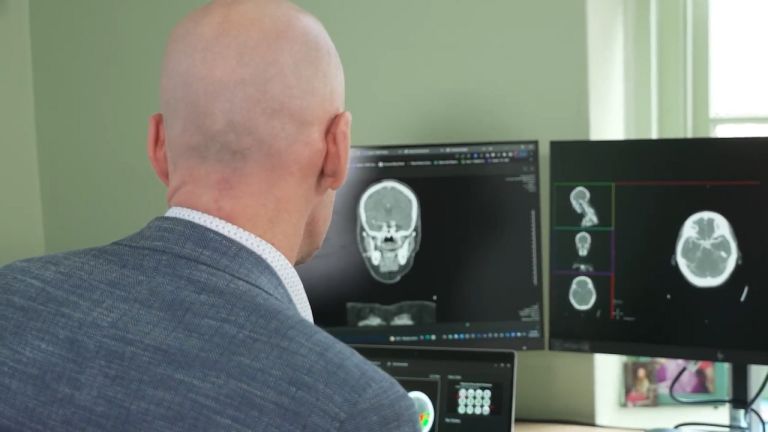Professor Ken Butcher, Medical Director, NSW Telestroke Service and Director Clinical Neuroscience, Prince of Wales Hospital, said the Telestroke service bridged more than just geographical distances in the fight against stroke.
“Every year, around 19,000 residents in NSW have a stroke. One of the many Telestroke patients is Mary, who is in her seventies and lives 25 minutes from town in regional NSW,” said Professor Butcher.
Mary collapsed at home and was found by her husband who called an ambulance. On arrival at her local hospital, Mary was triaged, assessed for Telestroke and had a CT scan.
Telestroke Neurologist Dr Evans, who is located in the Central Coast LHD, assessed Mary who by then was paralysed on her left side and had lost some vision.
“Mary was prescribed clot busting medicine and closely monitored for 24 hours in the Emergency Department, before being transferred to the Stroke Unit at the hospital,” said Professor Butcher.
“By the next morning, her condition had returned to normal and she was kept in hospital for observation for another two nights before going home.”
“This Stroke Week I am very pleased to let you know that today Mary is living a happy, normal life and is very thankful for the NSW Telestroke Service,” Professor Butcher added.
Stroke Foundation Chief Executive, Sharon McGowan congratulated everyone involved in the NSW Telestroke Service for making such an impact for hundreds of stroke patients.
“Telestroke is an absolute gamechanger for regional clinicians to be able to quickly link up with a stroke specialist, thousands of miles away, and enable them to view brain scans and assess the patient through a video call,” Ms McGowan said.
* Please note that the patient’s name has been changed to protect their privacy.
More information
For more information about:
- Stroke Week visit the Stroke Foundation
- telestroke for clinicians visit the Agency for Clinical Innovation
